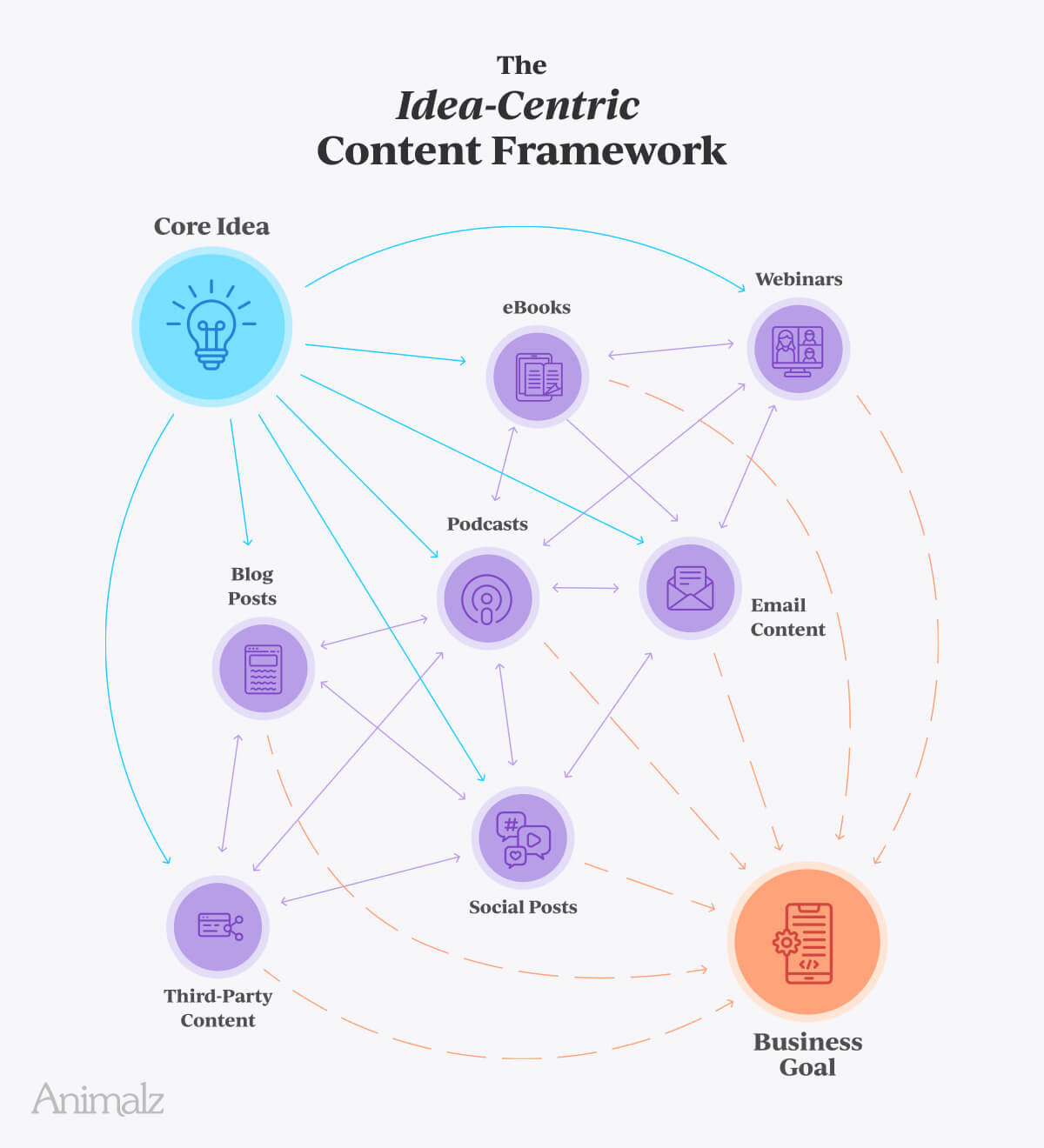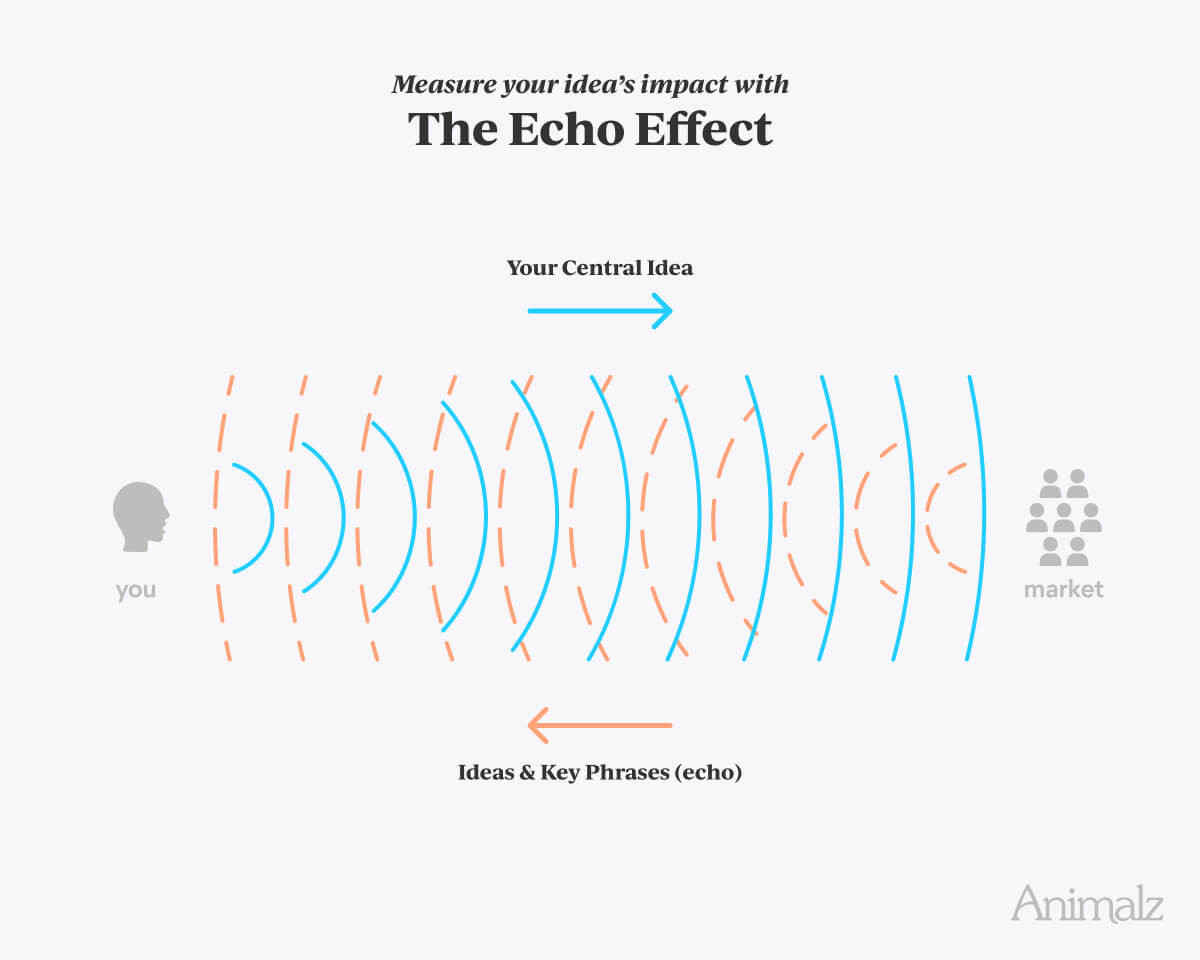We love to invite content marketing pioneers to share the innovative strategies they’re using to drive results. In this guest post, Mark Rogers, Director of Content Marketing at Freshpaint and former Director of Strategy at Animalz, shares his framework for using a central idea to tie together all content efforts.
If there’s one thing I’ve learned in my years as a content marketer, it’s that simplicity wins. The most effective content strategies are often the most straightforward. Yet, we often fall into the trap of overcomplicating things, spending hours crafting intricate plans that look impressive but fail to deliver.
I know because I’ve been there. I used to pour countless hours into creating elaborate content strategies, only to realize they were little more than exercises in busywork. The truth is, your content strategy doesn’t need to be a 50-page document. It should be actionable, adaptable, and, most importantly, centered around a big idea.
That’s right. The secret to a truly impactful content strategy lies not in the individual blog posts, videos, or social media updates you churn out. It’s the overarching idea that guides and connects all those pieces. When you treat content as a vessel for distributing a central idea rather than a series of one-off pieces, you unlock a new level of impact and resonance with your audience.
The Power of a Central Idea
Traditionally, content distribution has focused on pushing out individual pieces of content through various channels — a blog post here, a social media update there, and an email campaign to round things out. And while this approach can generate short-term spikes in traffic or engagement, it often fails to create any lasting impact or build real momentum for your brand.
The problem is that your message gets lost when each piece of content stands alone, disconnected from a larger narrative. Your audience is left with a fragmented experience, and it’s hard for any single idea to take root and flourish.
An idea-centric approach provides a framework for all your content efforts, offering several key benefits:
Cohesion: By tying every piece of content back to a central theme, you create a cohesive story that’s more powerful than the sum of its parts.
Reinforcement: Your blog posts, videos, social media updates, and email newsletters all work together to reinforce your core message.
Engagement: Consistently communicating your central idea gradually builds awareness, trust, and engagement with your target audience.

Freshpaint Case Study: Bringing “Privacy-First Marketing” to Life
When I joined Freshpaint as Director of Content Marketing, I knew we needed a strong central idea to guide our content efforts. Freshpaint is a software company that helps healthcare organizations leverage their marketing data in secure, HIPAA-compliant ways. We had a unique story to tell, but our content was all over the place.
After some deep thinking and team brainstorming, we landed on the theme of “privacy-first marketing.” This idea encapsulated our belief that healthcare marketers could drive incredible results by putting data privacy at the forefront of their strategies. It was a powerful, differentiating message we could explore from multiple angles.
With “privacy-first marketing” as our north star, we’ve set about creating a wide range of content assets, all tied back to this central idea:
A series of blog posts exploring various aspects of privacy-first marketing, from HIPAA considerations to data governance best practices
A planned “Privacy-First Marketing Pioneers” podcast, which will feature interviews with healthcare marketers leading the charge in this new approach
Webinars diving deep into privacy-first tactics and strategies
Case studies showcasing how Freshpaint customers are putting privacy-first principles into action with amazing results
Our sales collateral and product messaging have started to incorporate the privacy-first theme. For example, our product landing pages now include headers like “Eliminate Human Error With A Privacy-First Approach To Data Sharing,” underscoring our commitment to this central idea.
Each of these content pieces serves a specific purpose in our idea-centric strategy:
They define and elaborate on our central idea of privacy-first marketing for our target audience. Through blog posts, webinars, and podcasts, we explore what privacy-first marketing means, why it matters for healthcare businesses, and what capabilities they need to make it happen.
They position Freshpaint as the go-to authority on privacy-first marketing. By consistently creating valuable content around this theme and showcasing real customer success stories, we’re establishing ourselves as the company uniquely suited to deliver the value of privacy-first marketing through our platform and expertise.
The initial results of our privacy-first marketing messaging have been striking. In the first six months, the term has become synonymous with the Freshpaint brand. Our website traffic and engagement rates soared. Most importantly, we’ve started seeing clear signs that the idea resonates far beyond clicks and pageviews.
Our sales team reported prospects bringing up “privacy-first marketing” unprompted on calls. Healthcare marketing leaders started writing and speaking about the concept, referencing Freshpaint as the originator. Even a few competitors are trying to co-opt the terminology in their messaging.
By rallying our content around a singular, powerful idea, we didn’t just improve our content metrics. We’ve begun to fundamentally shape the conversation in our industry and establish Freshpaint as a thought leader. And that, ultimately, is the true power of an idea-centric approach.
Finding Your Own Central Idea
Now, you might be wondering: “That sounds great for Freshpaint, but how do I find the right central idea for my own company?” The good news is, it’s simpler than you think.
Here’s the basic process I recommend:
Start with your company’s unique value proposition. What sets you apart from competitors? What core belief or approach drives your product or service?
Brainstorm themes or ideas that encapsulate that unique value prop. Aim for ideas broad enough to fuel many content pieces, but specific enough to be ownable for your brand.
Pressure-test your ideas with small experiments. Mention the theme in a few blog posts or social media updates. Bring it up on a podcast interview or at an industry event. See what resonates with your audience.
Once you’ve zeroed in on a winning idea, commit to it. Infuse it into every aspect of your content strategy, from your editorial calendar to your distribution tactics.
Continually measure and optimize. Track how your content is performing, but also keep an eye out for “idea echoes” — mentions of your central theme out in the wild by customers, industry peers, and even competitors.
One key thing to remember is that your central idea should align closely with your overall marketing goals and company mission. The tighter the connection between your content theme and your core business objectives, the greater the impact you’ll see.
Measuring Impact: The Echo Effect
As you embark on your idea-centric content journey, it’s important to rethink how you measure success. While traditional metrics like traffic, engagement, and conversions still matter, the ultimate sign that your central idea is resonating is what I call the “echo effect.”

The echo effect is when you start to hear your core idea or theme reverberating back to you from the market: It’s customers mentioning your key phrase unprompted in sales calls. It’s industry bloggers or speakers referencing your idea in their content. It’s competitors trying to hijack your terminology for their own purposes.
These “idea echoes” are the most powerful indicator that your content is making an impact. They show that your theme has broken through the noise, sticky enough to take hold in people’s minds and conversations. And that’s incredibly valuable for brand awareness, thought leadership, and driving long-term business results.
So as you execute your idea-centric strategy, don’t just track the usual vanity metrics. Keep your ears open for those echoes, and leverage them as proof points to double down on your central theme.
Focus, The Fuel For an Idea-Centric Strategy
Ultimately, the power of an idea-centric approach to content marketing boils down to one thing: focus. You cut through the clutter and make a lasting impression on your audience by rallying your content around a singular, resonant theme.
It’s not about churning out more content; it’s about making every asset serve a bigger story. It’s a simple concept but an incredibly effective one.
Freshpaint’s ongoing journey with “privacy-first marketing” illustrates the potential of this approach. By continually rallying our content around one big idea, we’re not just boosting short-term metrics. We’re shaping the conversation in our industry and cementing our brand as a thought leader.
That’s the power of putting a big idea first in your content strategy. It’s a shift every content marketer should be racing to make. So find your singular, powerful theme, make it the beating heart of your content program, and watch as it takes on a life of its own, sparking conversations, shaping perceptions, and driving real results for your business.
This is our second guest post showcasing content marketing pioneers and the innovative strategies they use to drive business results. If you enjoyed Mark’s insights on idea-centric content marketing, be sure to check out Gareth Davies’ post on his framework for content-led product development at Parabol.
